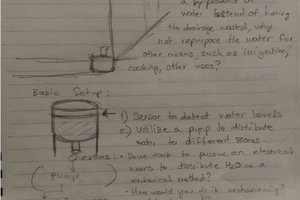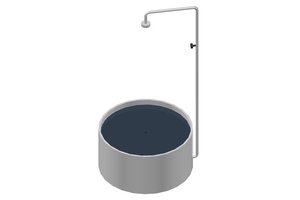Introduction
The automatic water pump controller using Arduino is a project that aims to automate the control of water pumps based on specific conditions or requirements. It utilizes the Arduino microcontroller board, along with various sensors and components, to monitor the water level and control the operation of the water pump accordingly.
Traditionally, water pumps are manually operated, requiring constant monitoring and adjustment by individuals. However, with the advancement of technology, automation has become more prevalent, enabling more efficient and convenient control of water pumps.
Throughout this project, we will explore the necessary components, circuit connections, and programming logic required to develop an automatic water pump controller using Arduino. By following the provided instructions, enthusiasts can create their own customized system and experience the benefits of automation in water management.
Full Project Link :
https://electronicsworkshops.com/2023/06/23/automatic-water-pump-controller-using-arduino/
Bill Of Materials
| SN | COMPONENTS NAME | DESCRIPTION | QUANTITY | |
|---|---|---|---|---|
| 1 | Arduino nano | Microcontroller | 1 | https://amzn.to/3xvYlYG |
| 2 | Relay module | single channel | 1 | https://amzn.to/3PKqwOD |
| 3 | Resistor | resistor pack | 1 | https://amzn.to/3r2NKVy |
| 4 | water sensor | water level sensor | 1 | https://amzn.to/42WFMdS |
| 5 | Buzzer | Big | 1 | https://amzn.to/3b2eg9L |
| 6 | Adapter,Power | 5V / 2A | 1 | https://amzn.to/3MQzXqA |
| 7 | Connecting wires | jumper wire | some | https://amzn.to/3xs9FFd |
Advantages of Automatic Water Pump Controller using Arduino
Automatic Water Pump Controller using Arduino offers several advantages:
- Efficiency: The controller ensures efficient water usage by automatically activating and deactivating the pump based on the water level. This prevents unnecessary water wastage and optimizes the pump’s operation.
- Convenience: The automated system eliminates the need for manual monitoring and control of the water pump. Users can rely on the Arduino controller to handle the pump operation, saving time and effort.
- Water conservation: By controlling the pump based on water level, the system promotes water conservation. It prevents overfilling or emptying of water tanks, thus reducing water consumption and preserving this precious resource.
- Protection against dry running: The controller includes safeguards against dry running, which occurs when the pump operates without sufficient water supply. Dry running can damage the pump and reduce its lifespan. The automatic system prevents this by shutting off the pump when the water level is too low.
- Flexibility and customization: Arduino-based controllers are highly customizable and can be programmed to suit specific requirements. Users can adjust parameters such as water level thresholds, pump activation/deactivation timings, and even incorporate additional features like alarms or remote monitoring.
- Cost-effectiveness: The automation provided by the Arduino controller helps optimize water usage, reducing overall costs associated with water consumption. It also safeguards the pump against damage, potentially extending its lifespan and reducing maintenance or replacement expenses.
- Energy efficiency: With the automatic control of the pump, energy consumption is optimized. The pump operates only when necessary, leading to energy savings and lower electricity bills.
- Reliability: Arduino controllers are known for their reliability and stability. They can accurately monitor water levels and control the pump operation, providing a dependable solution for water management.
Overall, an Automatic Water Pump Controller using Arduino offers efficiency, convenience, water conservation, protection against dry running, customization options, cost-effectiveness, energy efficiency, and reliability, making it a beneficial solution for managing water pumps in various applications.
Working Principle of automatic water pump
The automatic water pump controller using Arduino works based on the input from water level sensors and the programmed logic in the Arduino...
Read more » electronicsworkshops
electronicsworkshops

 ump
ump
 Anteneh Gashaw
Anteneh Gashaw
 Ulrich
Ulrich